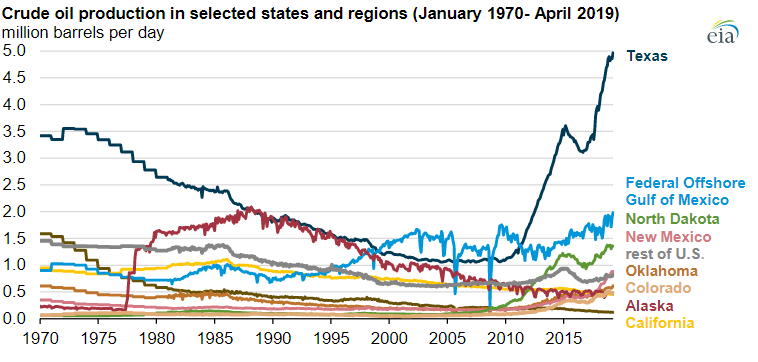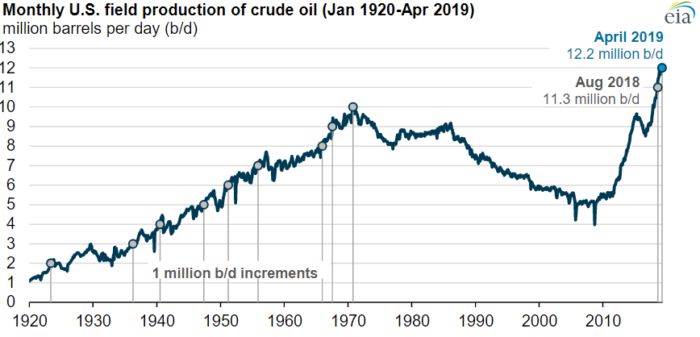According to EIA, the US crude oil production and lease condensate, accomplished a milestone in April 2019, with 12.2 million barrels per day. April 2019 is the first time that monthly US crude oil production surpassed the 12 million bpd. This record follows August’s 2018 record, when US crude oil production surpassed the 11 million bdp.
Specifically, Texas and the Federal Offshore Gulf of Mexico achieved record levels of production in April at 4.97 million b/d and 1.98 million b/d, respectively. Oklahoma also reached a record production level of 617,000 b/d, as shown in the graph below.

EIA estimates that crude oil production from tight formations in April 2019 reached 7.4 million b/d, or 61% of the U.S. total.
In the meantime, the Permian Basin, located in Western Texas and eastern New Mexico hold a stable growth, achieving records in their national oil production. The Permian’s prolific tight oil plays with multiple layers, including the Bone Spring, Spraberry, and Wolfcamp, make it one of the lower-cost areas to develop.
Additionally, the Permian Basin accounts for about 63% of Texas and 96% of New Mexico crude oil production.
From January 2018 to April 2019, Texas crude oil production increased by 1.1 million b/d (28%) and New Mexico production increased by 345,000 b/d (64%).
Moreover, EIA informed that the Permian region’s month-over-month increase averaged nearly 100,000 b/d for almost all of 2018. In the latest Short-Term Energy Outlook, EIA forecasts that Permian production will average 4.4 million b/d in 2019, a 920,000 b/d increase from its 2018 average.
EIA also forecasts that
GOM production to average 1.9 million b/d in 2019, making this region the second-largest contributor to crude oil production growth from 2018 to 2019.






























































